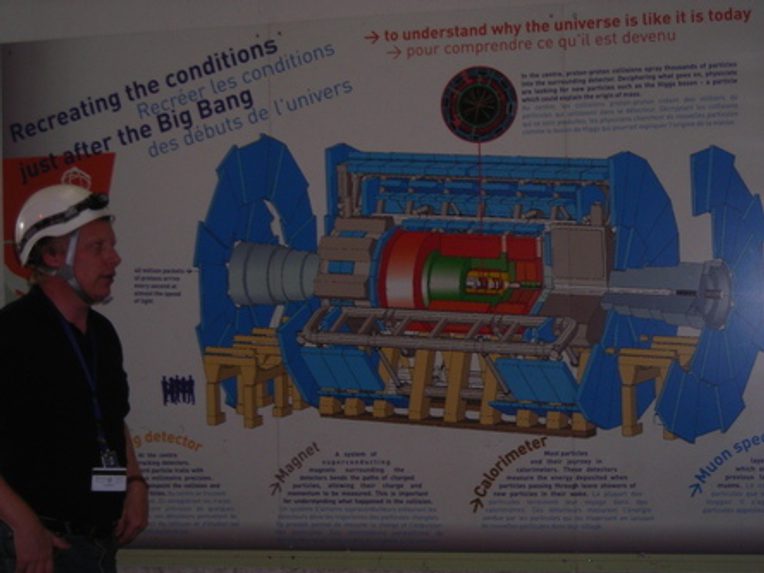This post builds on the research article “Ethnography and Theory of the Signature in Physics,” which was published in the August 2014 issue of the Society’s peer-reviewed journal, Cultural Anthropology.

Editorial Footnotes
Cultural Anthropology has published several articles that address the ethnography of science and experimentation, including Kim Fortun’s "Ethnography in Late Industrialism" (2012); Michael M. J. Fischer’s "Four Genealogies for a Recombinant Anthropology of Science and Technology" (2007); and Stefan Helmreich’s "After Culture: Reflection on the Apparition of Anthroplogy in Artificial Life, a Science of Simulation" (2001). Also see the curated collection on "Ethnographies of Science."
Cultural Anthropology has also published articles on signs, signals, and semiotics, including Carlo Caduff’s "The Semiotics of Security: Infectious Disease Research and the Biopoligics of Informational Bodies in the United States" (2012); Danilyn Rutherford’s "Kinky Empiricism" (2012); and Alaina Lemon’s "'Your Eyes Are Green like Dollars': Counterfeit Cash, National Substance, and Currency Apartheid in 1990s Russia" (1998).
About the Author
Arpita Roy received her doctorate in anthropology in 2011 from the University of California, Berkeley, where she taught as a lecturer for two years thereafter. Since September 2013, she has been working as a post-doctoral research scholar at the Laboratoire d'Anthropologie Sociale, Paris. Roy is currently expanding and revising her dissertation, which is an ethnographic study of physics and physicists at the Large Hadron Collider particle accelerator at Conseil Européen pour la Recherche Nucléaire (CERN) in Geneva, Switzerland.

Related Links
About CERN–Webpage with information on the science done at CERN.
Related Reading
Agamben, Giorgio. 2009. The Signature of All Things: On Method. New York: Zone.
Barad, Karen. 2006. Meeting the Universe Halfway: Quantum Physics and the Entanglement of Matter and Meaning. Durham, N.C.: Duke University Press.
Durkheim, Emile. 1965. The Elementary Forms of Religious Life. New York: Free Press.
Eco, Umberto. 1984. Semiotics and the Philosophy of Language. Bloomington: Indiana University Press.
Fischer, Michael M. J. 2003. Emergent Forms of Life and the Anthropological Voice. Durham, N.C.: Duke University Press.
Galison, Peter. 1997. Image and Logic: A Material Culture of Microphysics. Chicago: University of Chicago Press.
Knorr-Cetina, Karin. 1999. Epistemic Cultures: How the Sciences Make Knowledge. Cambridge, Mass.: Harvard University Press.
Latour, Bruno. 2000. "When Things Strike Back: A Possible Contribution of 'Science Studies' to the Social Sciences." British Journal of Sociology 51, no. 1: 10–23.
Pickering, Andrew. 1984. Constructing Quarks: A Sociological History of Particle Physics. Chicago: University of Chicago Press.
Rabinow, Paul. 2003. Anthropos Today: Reflections on Modern Equipment. Princeton, N.J.: Princeton University Press.
Rheinberger, Hans-Jörg. 1997. Toward a History of Epistemic Things: Synthesizing Proteins in the Test Tube. Stanford, Calif.: Stanford University Press.

Questions for Classroom Discussion
- What analytical insight does Roy gain from employing Paul Rabinow’s concept-centered approach and by focusing her ethnographic attention on the signature?
- In her article, Roy describes noting how "materiality turns away from itself while seeking itself," as scientists extract signals from collision data. What does she mean by this?
- Why does Roy insist on viewing the signature as a unity rather than a hybrid or assemblage?
- According to Roy, how does the signature come to bear a unique identity? What role does background play in Roy’s analysis? In what ways does this expand upon or critique Derrida’s notion of signature?
- A central question for Roy is how an experiment comes to reveal physical reality. In approaching this question, how does Roy critique Latour on the autonomy of things? How does she critique Knorr-Cetina on signs and fictions? What new line of thinking does she propose, and how does it relate to the distinction of a signature?